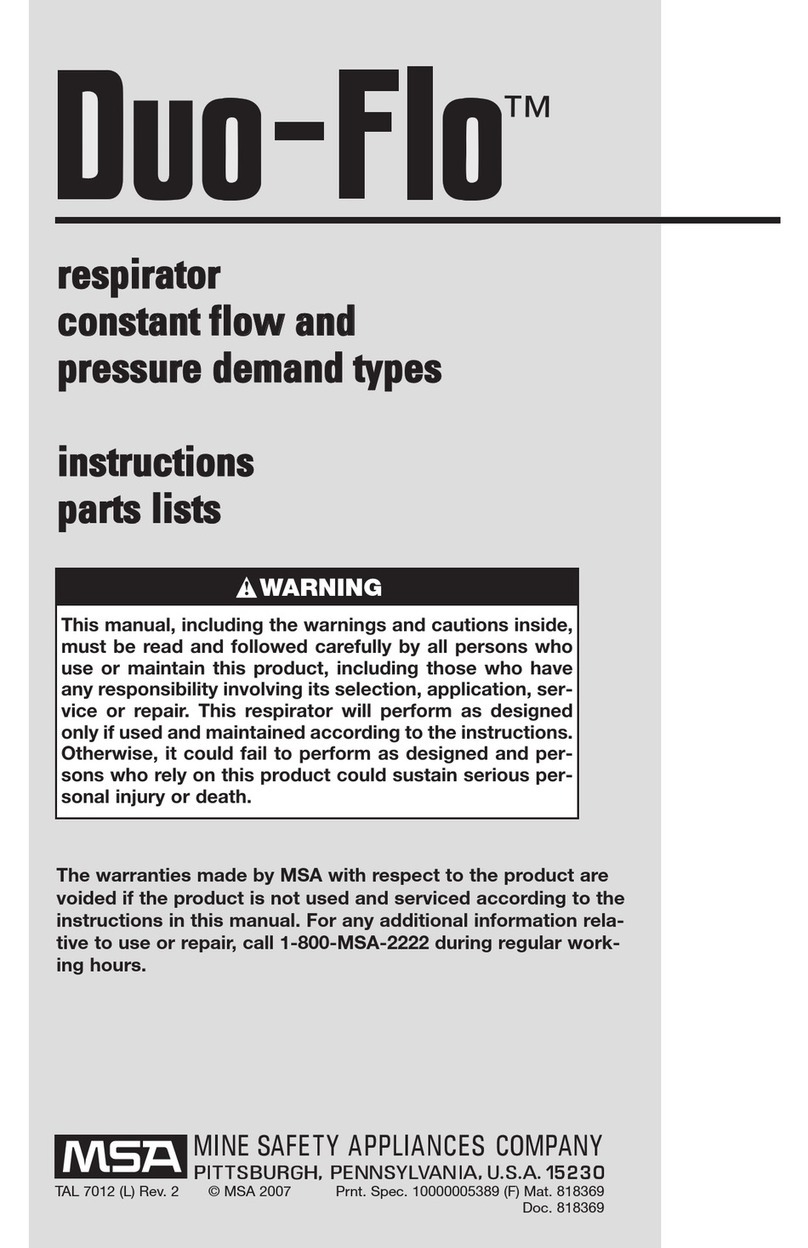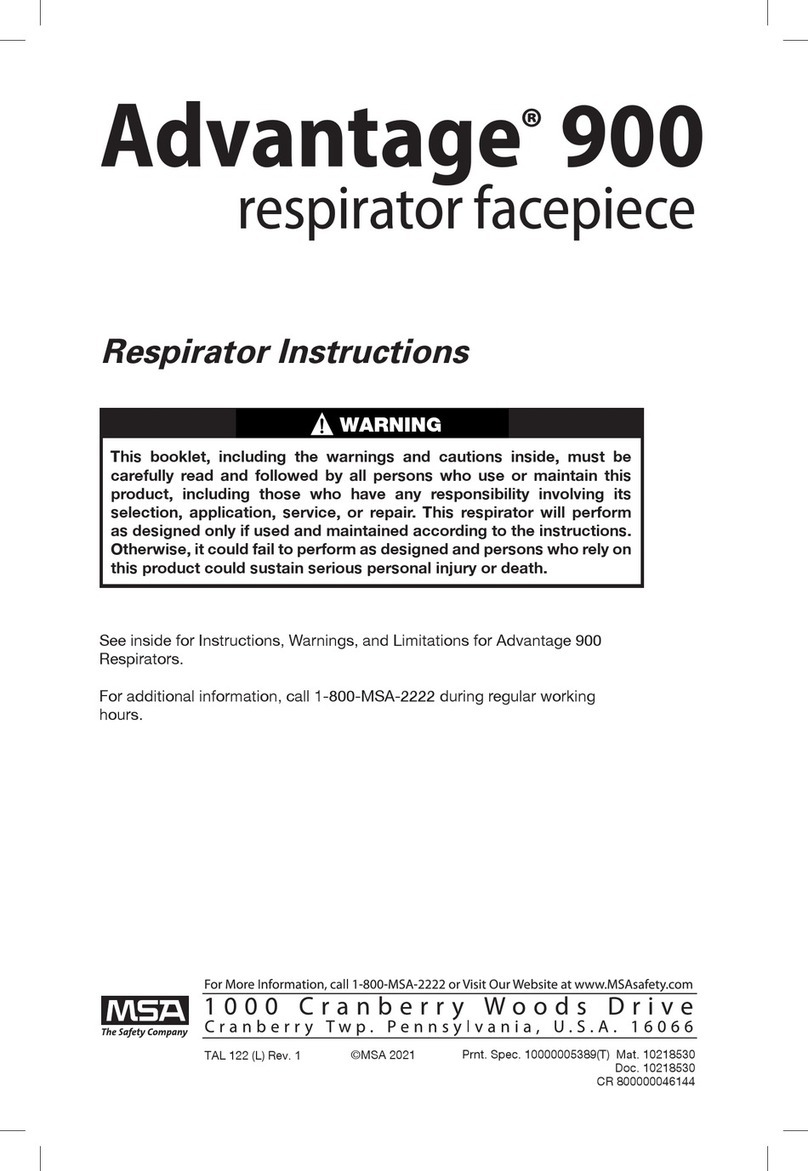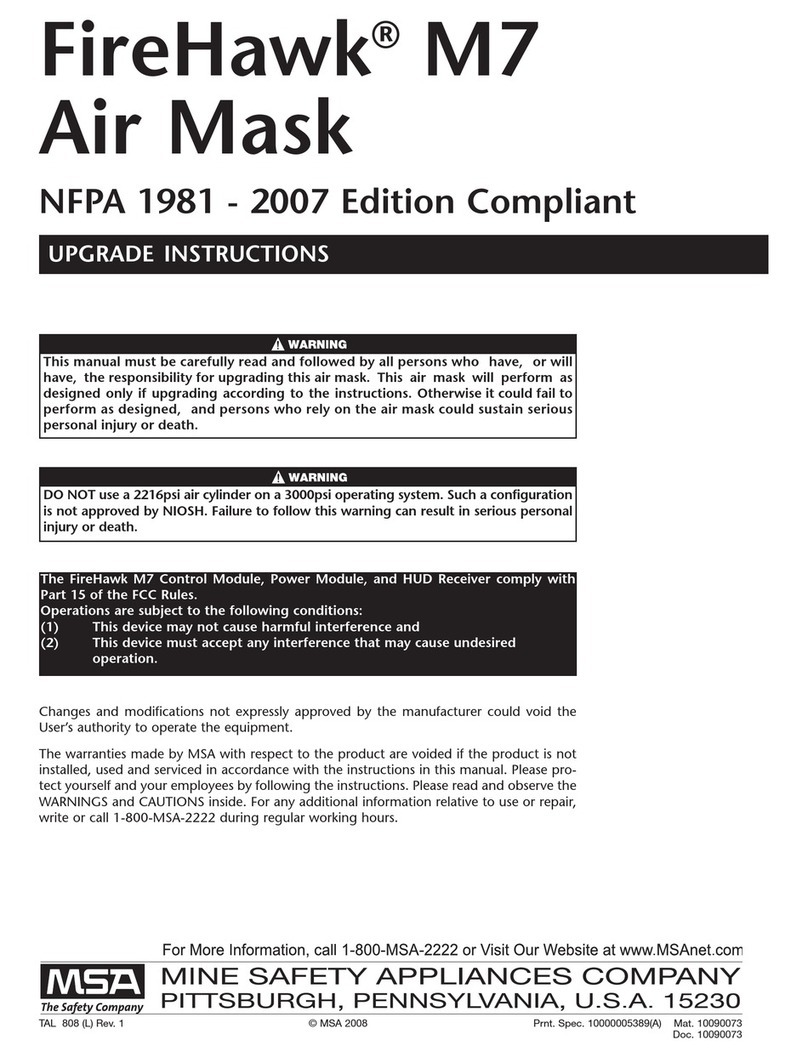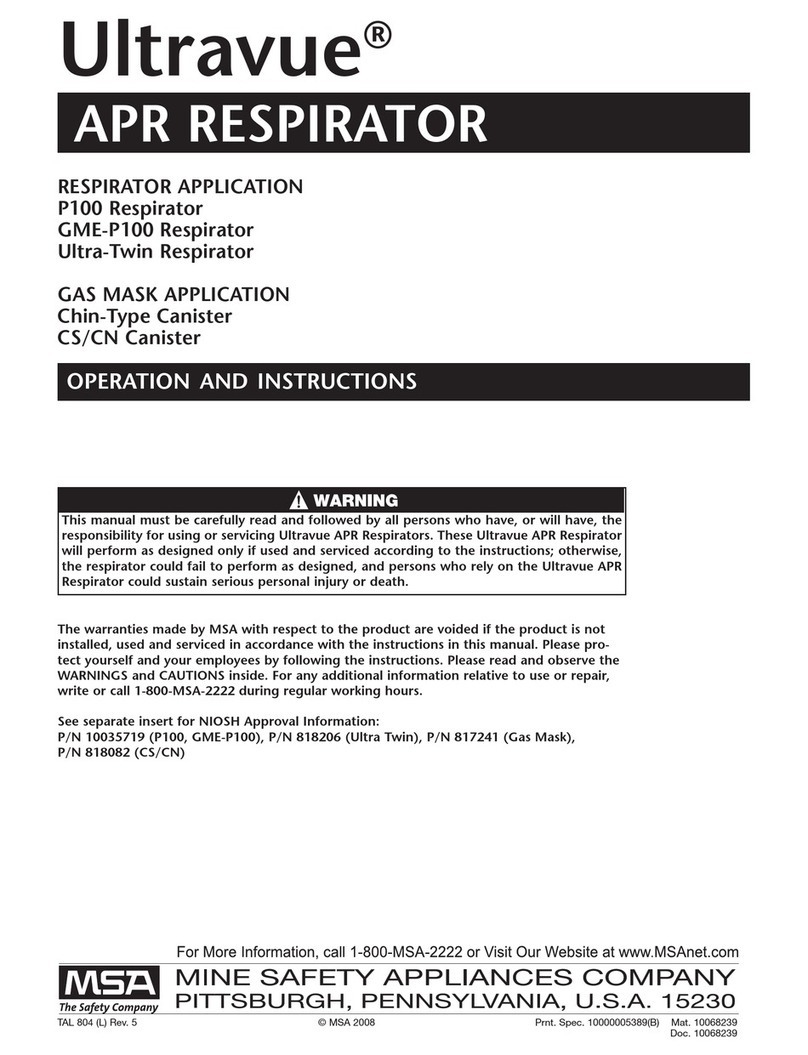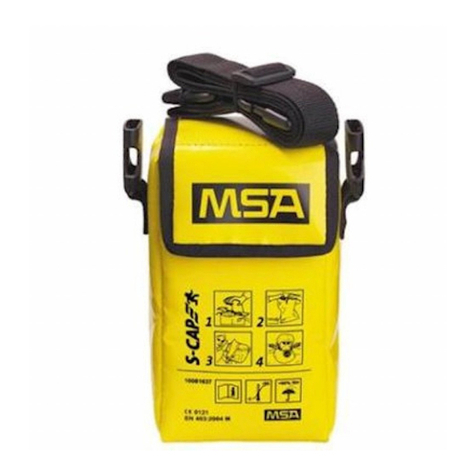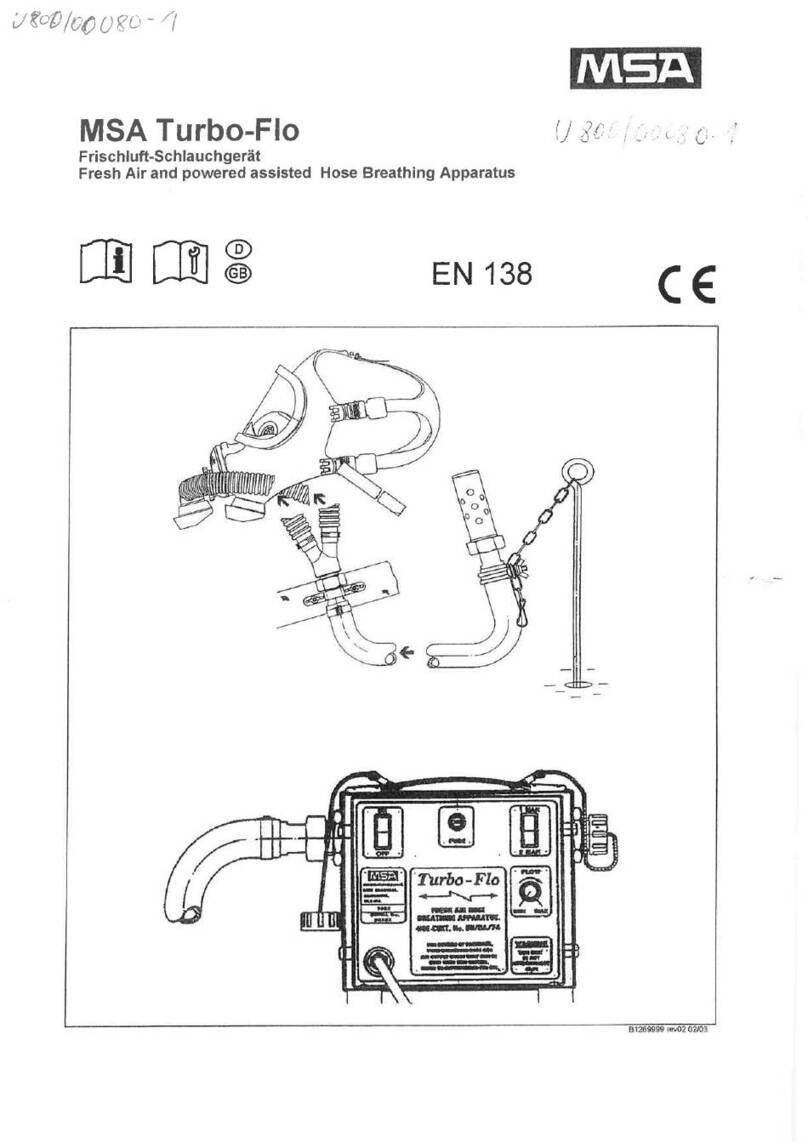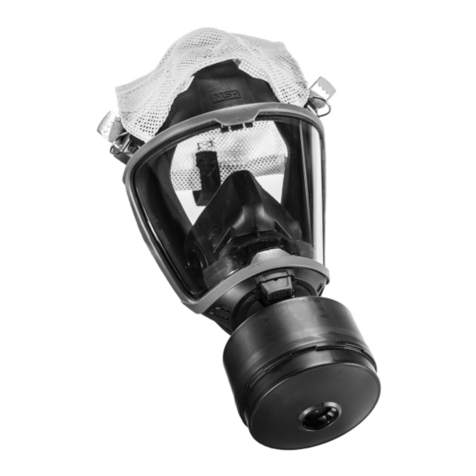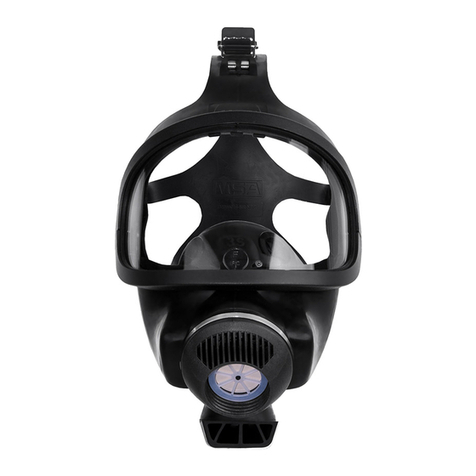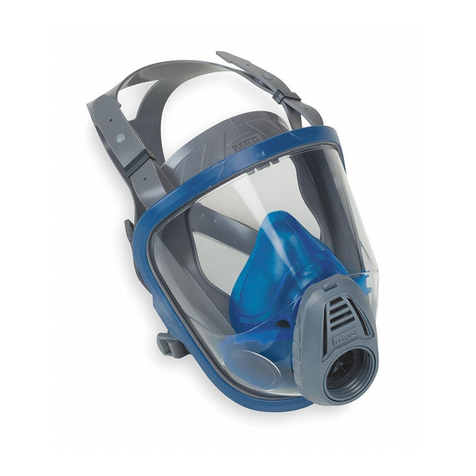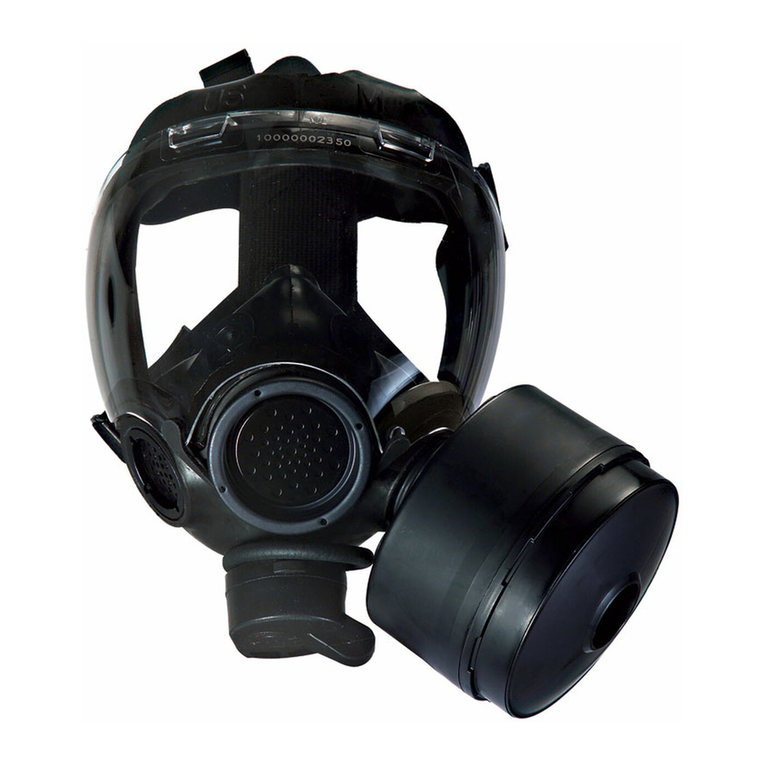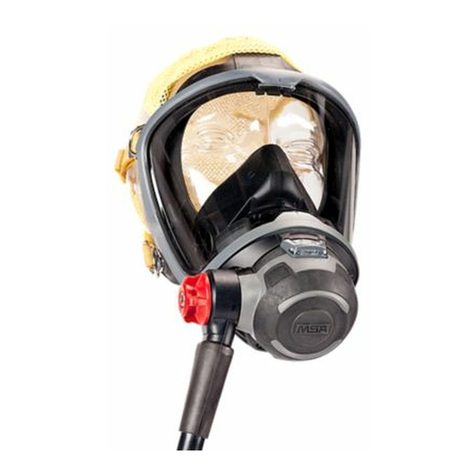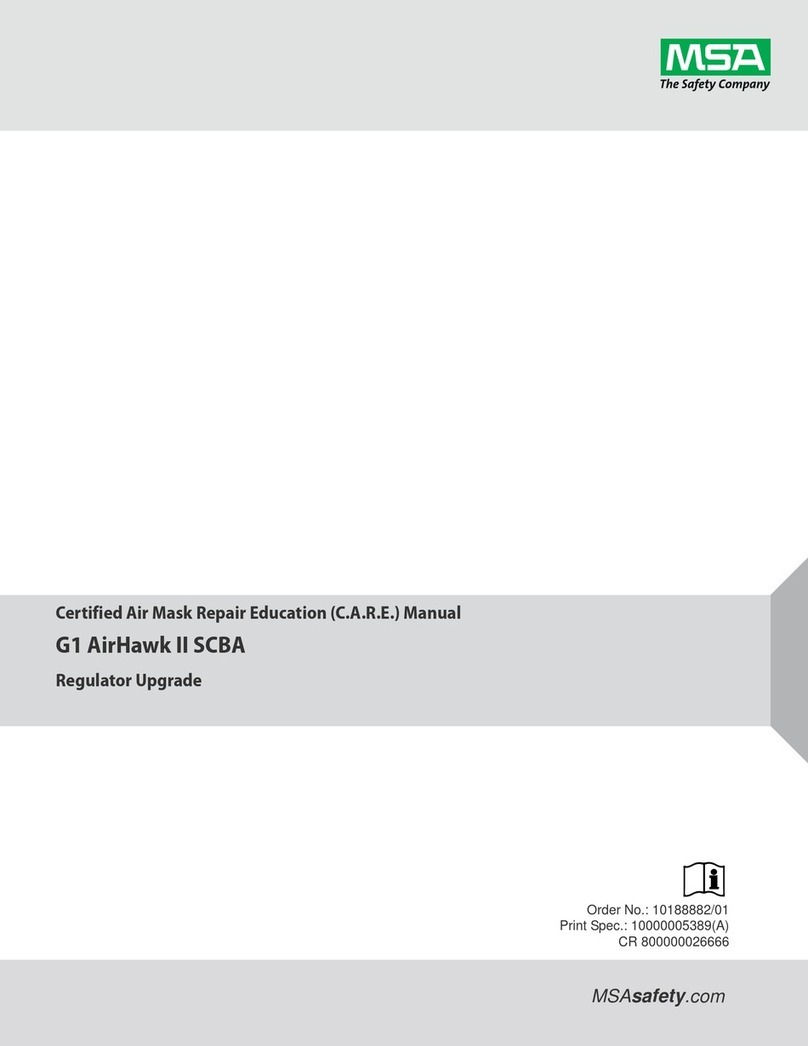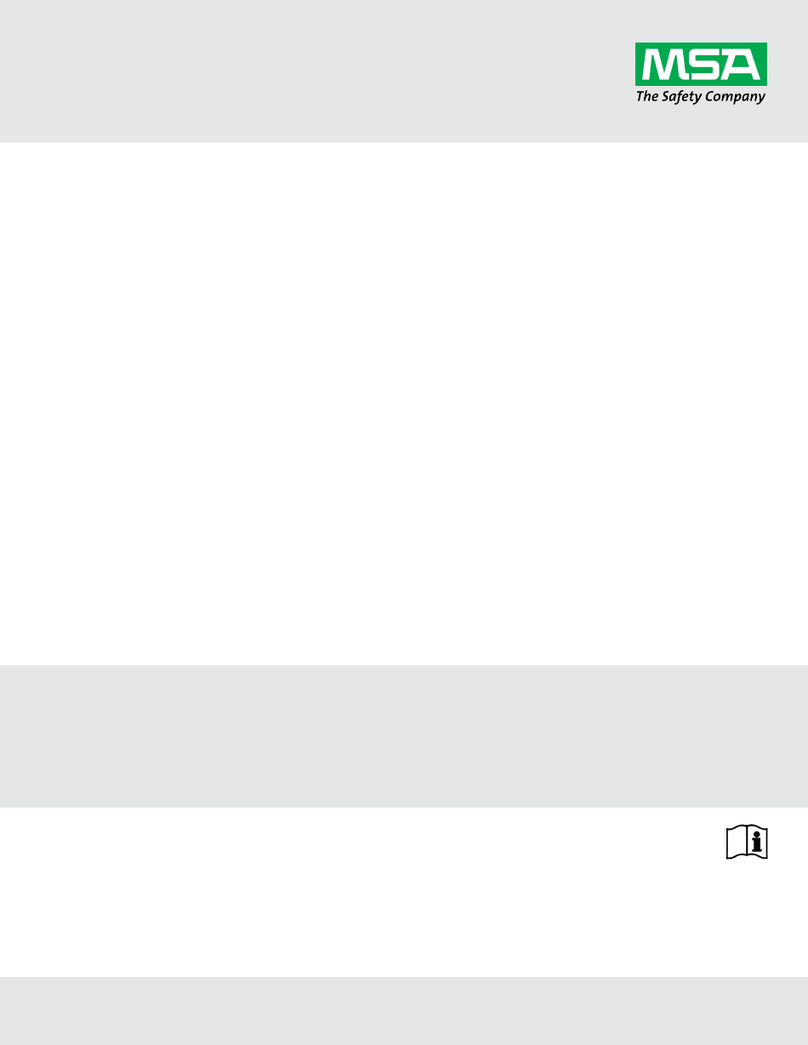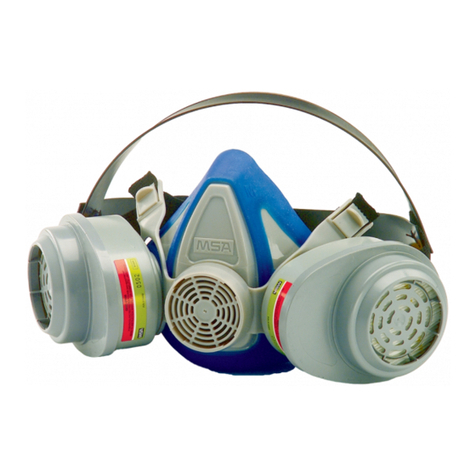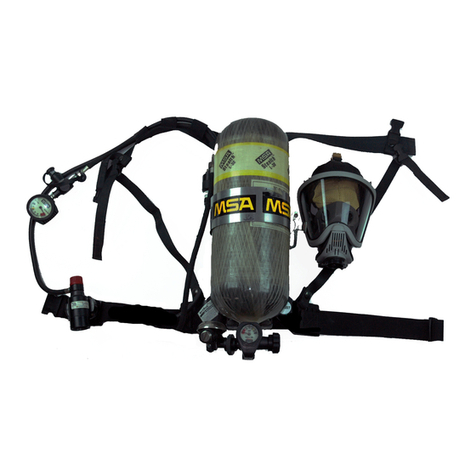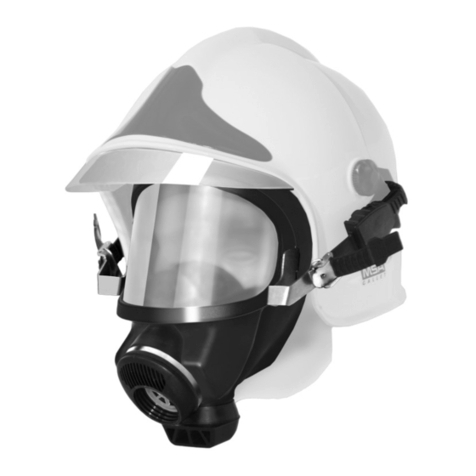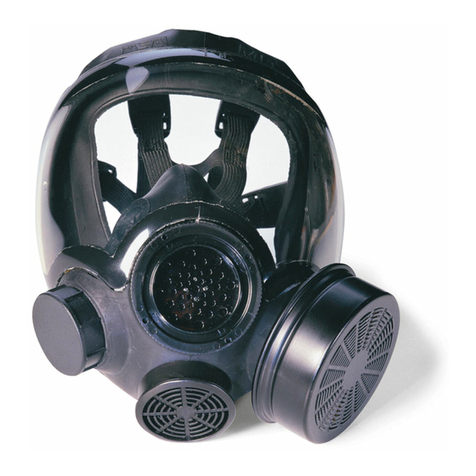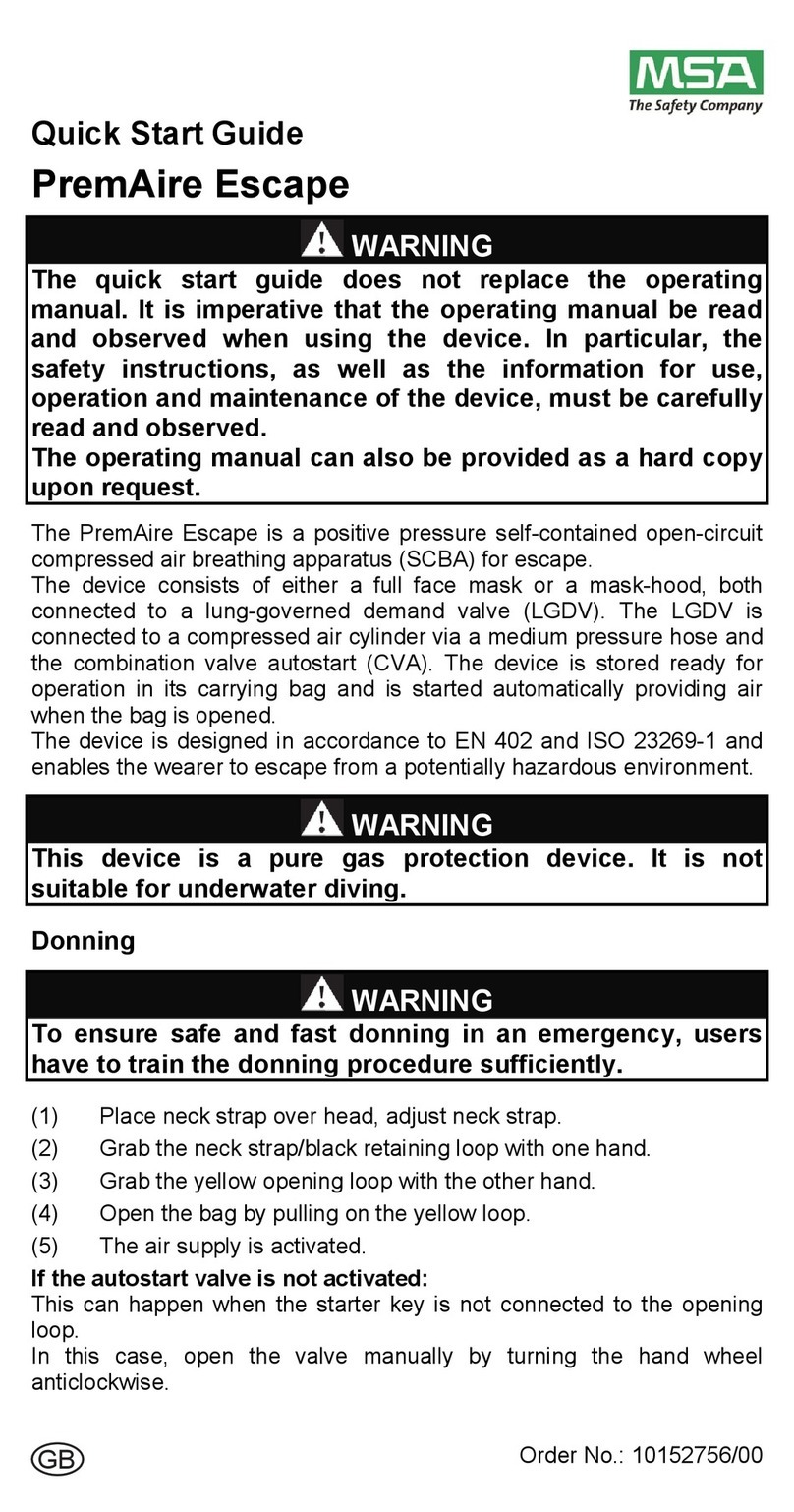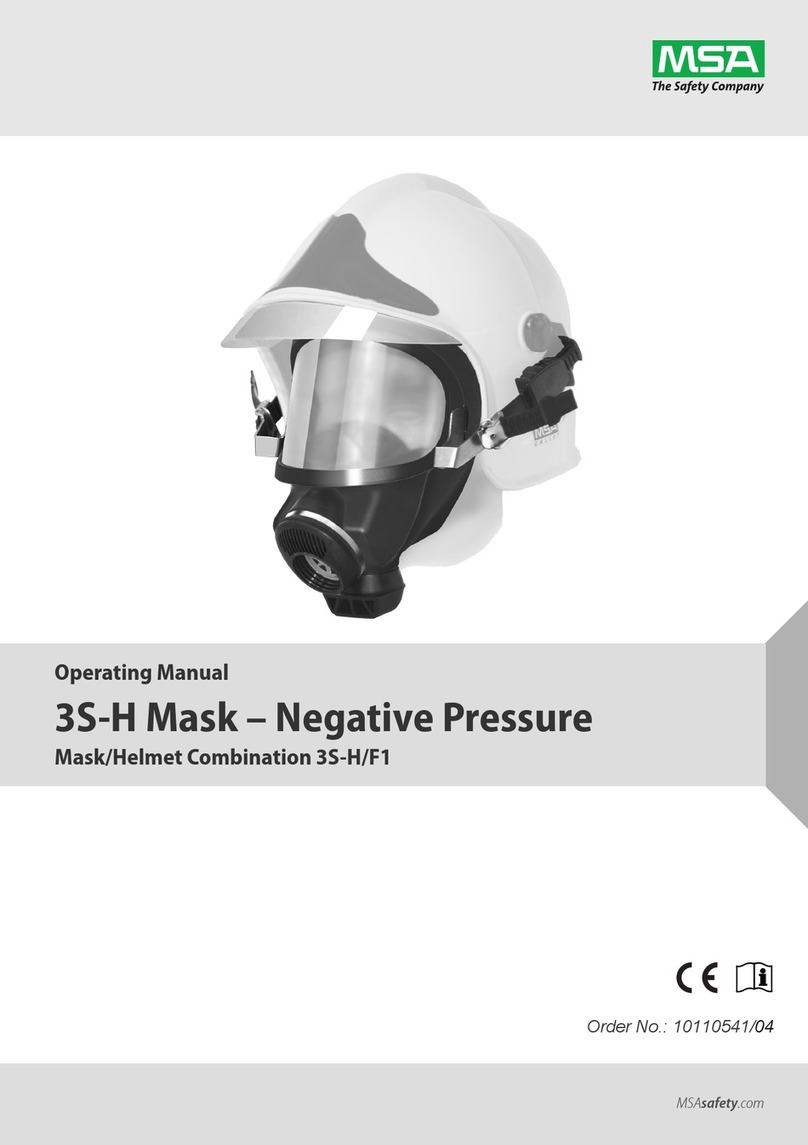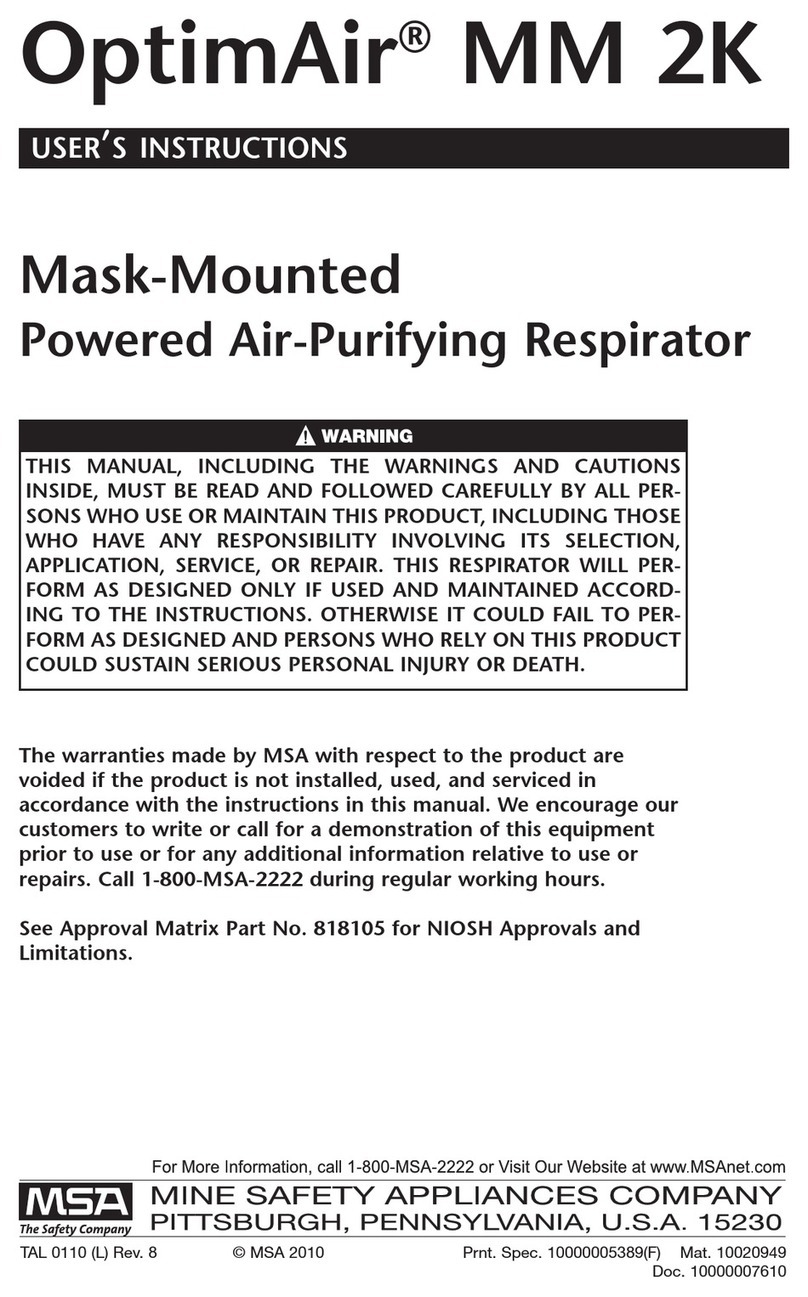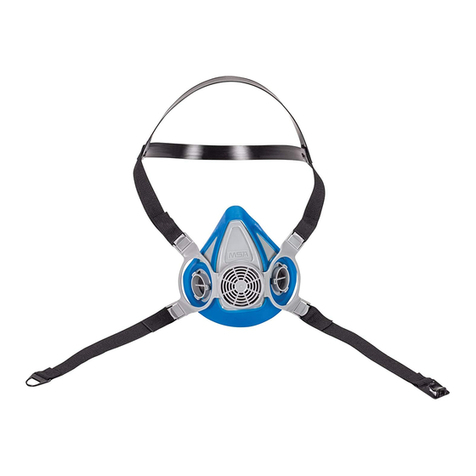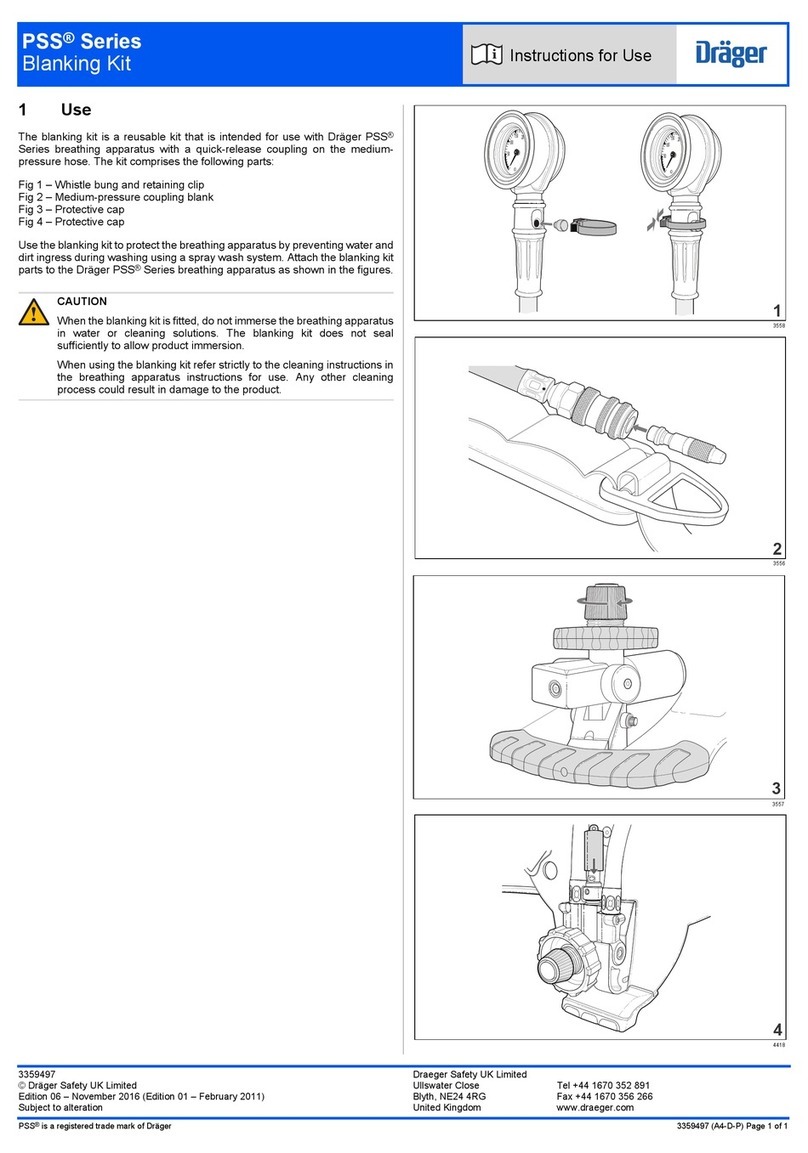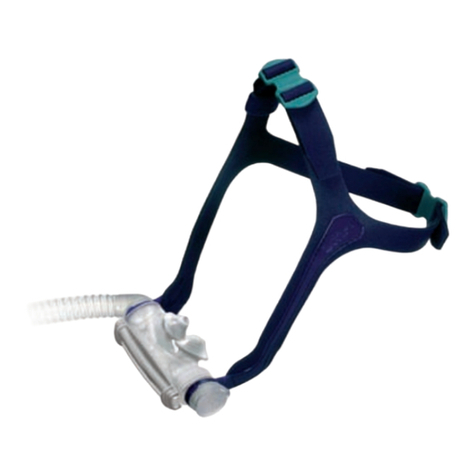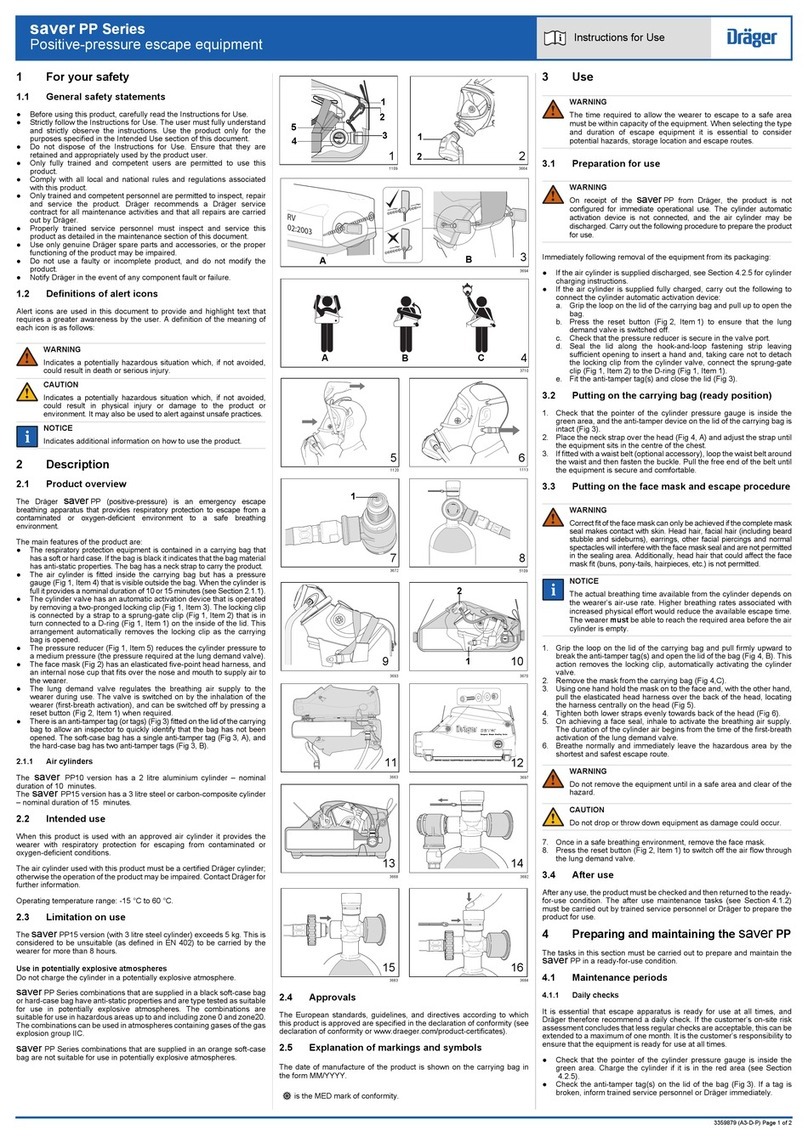CYLINDER VALVE REPAIR
Removing the Burst Disc
Before repairing the cylinder valve, all air must be bled
from the cylinder. Open the cylinder valve handwheel
1/2 turn and leave it open until all air has been exhaust-
ed. Wear hearing protection if this is done in an
enclosed area to avoid possible hearing damage. Do
not attempt to repair the
valve if pressure is
shown on the cylinder
pressure gauge. If pres-
sure cannot be relieved
by opening the cylinder
valve handwheel, the
cylinder must be repaired
by MSA Level III repair-
person. Failure to follow
these warnings can
result in serious personal
injury or death.
1. Place a 3/4" socket on the safety plug hex flats and
turn the plug counter-clockwise to remove the safety
plug.
2. Using a screwdriver, punch a hole in the burst disc.
3. Pull the burst disc out of the cylinder valve body.
4. Discard the disc.
5. Using the O-ring removal tool, lift the gasket out of the
cylinder valve body. Be careful not to scratch the sur-
face of the cylinder valve body.
Installing a New Burst Disc
1. Insert a new gasket into the cylinder valve body.
2. Place a thin film of Snoop on the new burst disc.
3. Place the new burst
disc on top of the gas-
ket. Ensure the gasket
and disc lay flat.
Be sure the gasket, then the burst disc, are installed in
the order described. Failure to install properly may
cause burst disc malfunction and can result in serious
personal injury or death.
Do not re-use the burst disc or the copper gasket.
4. Thread the safety plug into the cylinder body.
5. Using a torque wrench and socket, tighten the plug to
the torque of 26-30 ft.lbs.
6. Leak test the assembly (see Level I).
This completes the burst disc repair procedure.
Replacing the Cylinder Inlet Body
1. To remove the cylinder inlet body from the cylinder:
Before repairing the cylinder valve, all air must be bled
from the cylinder. Open the cylinder valve handwheel
1/2 turn and leave it open until all air has been
exhausted. Wear hearing protection if this is done in
an enclosed area to avoid possible hearing damage.
Do not attempt to repair
the valve if pressure is
shown on the cylinder
pressure gauge. If pres-
sure cannot be relieved
by opening the cylinder
valve handwheel, the
cylinder must be
repaired. Failure to follow
these warnings can
result in serious personal
injury or death.
a. Secure the cylinder in a suitable fixture.
b. Place a 1 1/8" crowsfoot wrench on the flats on the
end of the cylinder valve. Turn the valve counter-
clockwise until the cylinder valve is completely out
of the cylinder.
c. Roll the O-ring over the threads.
d. If the cylinder valve inlet is damaged it must be
removed.
2. Use a high intensity light to inspect the inside of the
cylinder for contamination. Be sure the cylinder interior
is completely dry.
Do not use the cylinder if it has an odor, is contami-
nated internally, or has any visible signs of damage. If
the cylinder appears damaged return it to a Certified
Level III MSA Air Mask Service Center for repair.
3. Clean the O-ring sealing surface on the cylinder with a
clean, dry, lint-free cloth. Be sure the cylinder sealing
surface is undamaged and free from contaminants,
such as dirt or tape residue.
4. Inspect the cylinder neck area. Do not use the cylinder
if it has scratches, cuts, or grooves which may prevent
an air-tight seal.
5. Install a new O-ring on the cylinder valve following the
steps below:
Apply Christo-Lube lubricant to the O-ring and the O-
ring groove just before installing the cylinder valve. Do
not store these parts after lubricating them. Christo-
Lube lubricant may collect dirt and/or contaminants.
9TAL 4011 (L) Rev. 3 - 817081
